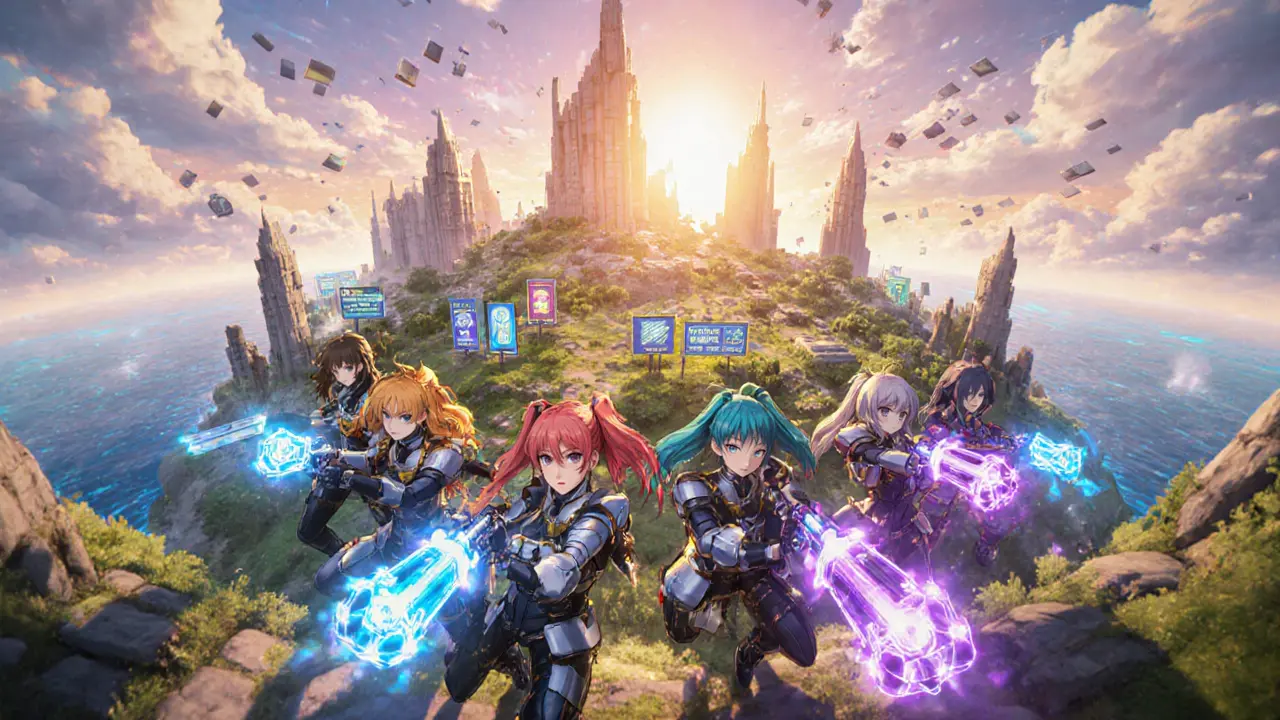Play-to-Earn Battle Royale: A Deep Dive into Crypto Gaming
When talking about play-to-earn battle royale, a genre that mixes fast‑paced battle royale mechanics with blockchain‑based rewards, you’re looking at a niche that’s reshaping how gamers earn real value. Also known as P2E Battle Royale, this model lets players collect in‑game assets that live on a public ledger. Below we’ll break down why this space matters, the tech behind it, and what you can expect from the projects featured on this page.
Key Building Blocks: GameFi, NFTs, and Tokenomics
The backbone of any GameFi, platforms that merge gaming with decentralized finance is tokenomics. Good tokenomics define how a game’s native token is minted, distributed, and burned, directly influencing player earnings. NFTs, non‑fungible tokens that represent unique in‑game items add scarcity and tradability, letting players truly own skins, weapons, or characters. Together, GameFi and NFTs enable a self‑sustaining economy where skill translates to crypto rewards.
Another crucial piece is the battle royale genre, games where dozens of players fight until one remains. The high‑stakes nature of these matches creates strong incentives for players to invest time and money. When you overlay tokenomics, every elimination, every victory, can trigger a smart contract that mints or distributes tokens. This simple chain—battle royale mechanics require smart contracts that enable token rewards—forms the core semantic triple of the space.
Conveniently, many of these games run on existing blockchains like Ethereum, Solana, or BNB Smart Chain. The choice of chain impacts transaction speed, fees, and the overall player experience. For example, a Solana‑based battle royale can settle rewards in seconds with near‑zero gas, while an Ethereum‑based game might offer deeper liquidity but higher cost. Understanding this trade‑off helps you pick the right platform for your play style.
From a risk perspective, token price volatility and smart contract bugs are real concerns. Smart contracts are immutable, so a coding error can lock up millions of dollars. That’s why reputable projects undergo third‑party audits and provide clear risk disclosures. Players should always check audit reports and community sentiment before committing significant capital.
Beyond the tech, community engagement drives long‑term success. Projects that host regular tournaments, reward active players with airdrops, or let the community vote on game balance tend to retain users longer. This community‑centric approach creates a feedback loop: more players generate more data, which informs better tokenomics, which then attracts even more players.
In the articles below you’ll find clear breakdowns of specific tokens, platform reviews, and practical guides on how to claim airdrops or avoid common pitfalls. Whether you’re curious about a new token launch, need a safety checklist for a decentralized exchange, or want to understand how slashing penalties affect staking in these games, the collection covers it all. Dive in to get the actionable insights you need to navigate the fast‑moving world of play‑to‑earn battle royale games.
Battle Hero (BATH) Chest NFT Airdrop Details - How to Claim Your Free NFT
Learn how to claim a Battle Hero (BATH) Chest NFT from the CoinMarketCap airdrop, understand eligibility, referral boosts, and future drop plans.

